

Biodiversity
Action
Plan
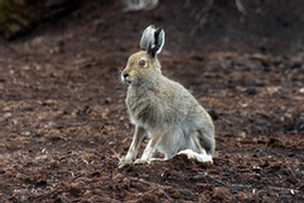
Hares. ‘Boxing hares’ -females fending off males by standing upright and striking out with their front paws- are a notable sight in Spring.
There are two hare species found in Barnsley: the Brown Hare which is fairly widespread across the lowland fields of Barnsley and the Mountain Hare which replaces it on the Barnsley upland moors.
Priority species
Brown Hare Lepus europaeus
Mountain Hare Lepus timidus
Both hare species are Priority Species in the UK Biodiversity Action Plan 2007 (UKBAP)
They remain Section 41 species of principal importance under the NERC Act (2006). As such they are national priority species for Biodiversity 2020.
In addition the Peak District population of Mountain Hare is identified as vulnerable in the Mammal Society Red List.
They are Barnsley local priority species because of their national status and the potential for local conservation.
The Brown Hare was introduced into the UK over 2000 years ago replacing the native Mountain Hare, except in Scotland.
The Mountain Hares found in Barnsley are the result of introductions on the Peak District moorland in the 19th Century.
The Brown Hare is golden-brown, with a pale belly and a white tail. It is larger and faster than grey-brown Rabbits, with longer powerful legs and larger ears with distinctive black tips. The Mountain Hare is brown in summer but turns a distinctive white in winter. It also has a white tail but its long ears are shorter than those of the Brown Hare with only a slight black tip.
Hares live above ground and do not use burrows. They rest during the day hidden in shallow depressions (forms) in the ground and longer grass. They move out to feed in the open at dusk. When disturbed, they zigzag away at speed. As they run, they tuck their tail down so that the white underside is not visible – unlike Rabbits.
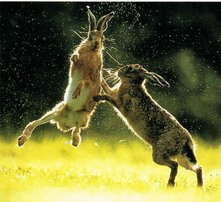
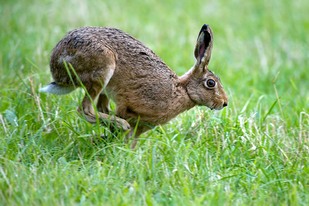
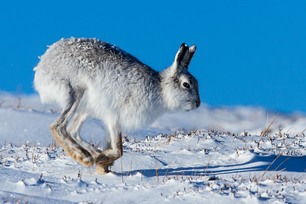
Brown Hare running in grassland Mountain Hare running in snow
The young leveret is born fully furred with eyes open and is left by the female in forms.
One visit per day is all the young get from birth until they are fully weaned after 3 - 4 weeks. This avoids attracting predators like the Fox. Where Foxes are common there are likely to be few hares.
More information on the conservation of both Brown and Mountain Hares, their distribution in Barnsley, and an action plan can be found via the following links.
Brown Hares breed from February to September; females can have up to four litters of two to four young (called leverets).
The breeding season for Mountain Hares is mainly in March to July and they may have fewer and smaller litters depending on the conditions.
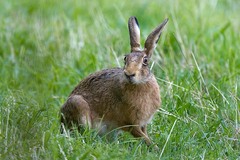
Brown and Mountain Hares